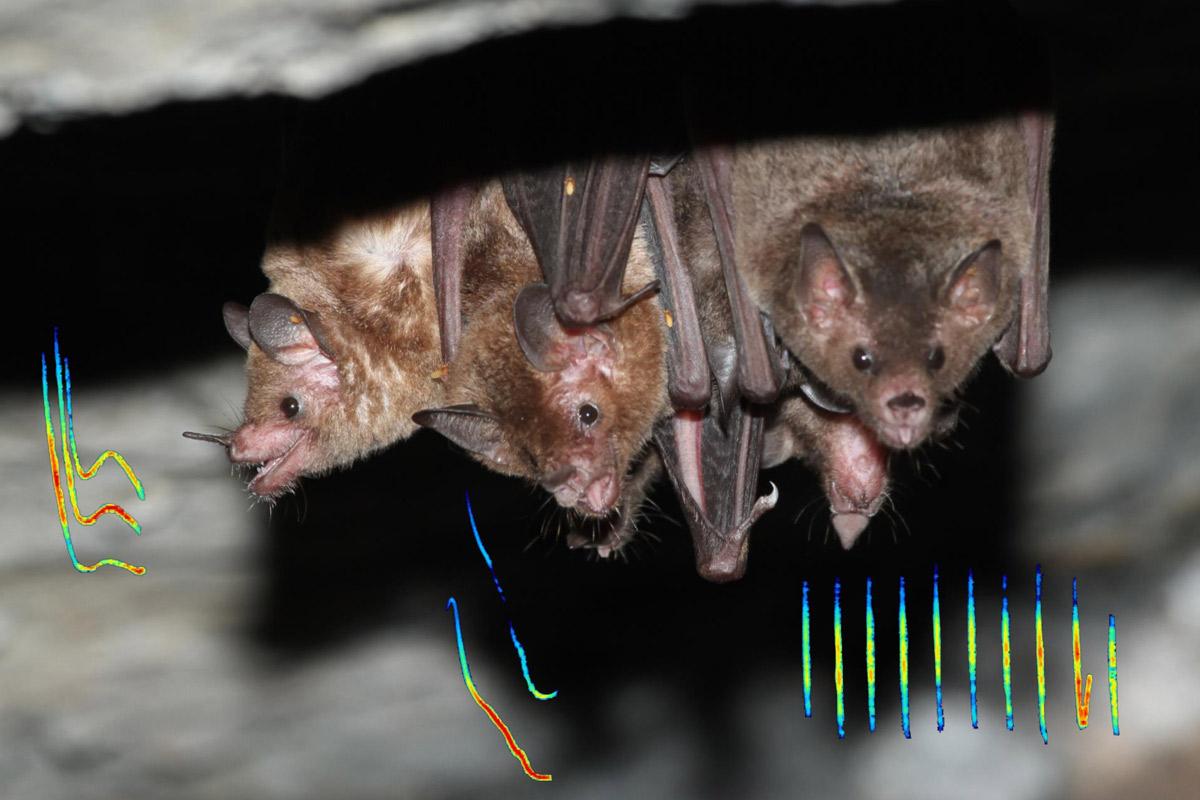A new study published in the journal Functional Ecology describes the virtuous circle between social and vocal complexity in bats. Scientists from the Museum für Naturkunde used a phylogenetic comparative analysis on 24 species to reveal that the information content of bat calls is positively related to the caller’s relevant social group size. When social interactions became more intricate, vocalizations had to encode more information, thus in turn facilitating even more complex interactions. Ultimately, a comprehensive theory on the coevolution of social and vocal complexity in animals may help to understand how human language, the most complex communication system in existence, evolved.
Interacting with members of one’s social group can be challenging. When social interactions become more complex, vocalizations mediating these social interactions should become more complex as well. Such a positive feedback loop between social and vocal complexity has been found in several animals, such as primates, rodents, and birds. However, evidence for bats, the second largest mammalian taxon, had been scarce, despite them being highly social animals with a well-developed vocal communication system.
A team of scientists from the Museum für Naturkunde, Mirjam Knörnschild, Ahana Fernandez and Martina Nagy, conducted a phylogenetic comparative analysis on 24 bat species whose social behavior and vocalizations had previously been studied. The scientists analysed different call types - isolation calls produced by juveniles to communicate with their mothers and calls produced by adult bats to communicate with group members – and assessed the amount of information they contained. Subsequently, they related this information content to the bats’ social group size in the respective situations these calls were produced in. They found evidence for a positive relation between calls’ information content and social group size in bats. “This is exciting”, Martina Nagy explained “because it suggests that when bat societies became more complex, their vocal communication had to become more complex as well”.
The findings are relevant beyond bats. “Our results are contributing to biolinguistics as well”, Mirjam Knörnschild added. The interdisciplinary field of biolinguistics focuses on the biological foundations of human language to understand its evolution. From a biolinguistic perspective, all aspects of human language share the general properties of other biological systems and can thus be studied accordingly. Work on hitherto understudied taxa such as bats is crucial for establishing a comprehensive theory on the coevolution of sociality and communication in all animals. This may ultimately help us understand how human language, the most complex communication system in existence, evolved.
Published in: Functional Ecology
Free pictures you get here:
http://download.naturkundemuseum-berlin.de/presse/Fledermausverhalten
Picture 1: Group of nectarivorous bats, Glossophaga soricina, communicating with social calls during their daytime rest in a cave (photo credit: Michael Stifter; vocalization credit: Mirjam Knörnschild).
Picture 2: Male greater sac-winged bat, Saccopteryx bilineata, communicating with nearby rivals roosting on the same tree during the day (photo credit: Michael Stifter; vocalization credit: Mirjam Knörnschild).
Picture 3: Group of frugivorous bats, Carollia perspicillata, communicating with social calls during their daytime rest in a hollow tree (photo credit: Michael Stifter; vocalization credit: Mirjam Knörnschild).
